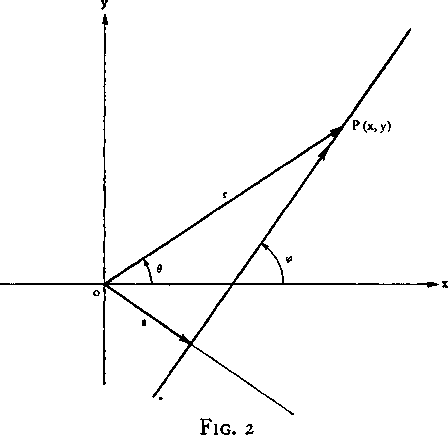Rectilinear Drawing 53
density for the drawing, and Fe is the similar density cor-
responding to the erasure (so that Fi≥Fe everywhere), then
the final drawing clearly corresponds to the density function
F = Fd-Fe≥0.
A second variant of our problem is obtained if we allow
only a single uniform erasure all over the plane, i.e., modify
F≥k>0 to F — k, where F is the density function for the
given drawing and the constant k corresponds to the uniform
erasure in question.
For our later purposes it is convenient to select a certain
point O in the plane as center for a system of rectangular
coordinates x, y and of related polar coordinates r, θ. Here r
is regarded as positive or negative while θ is an angular
coordinate of period 2τr so that (r, θ) and (— r, θ+π) will

denote the same point. Thus we may regard the density F
as a function of r and θ of period 2π: F = F(r, θ), with
F( — r, 0+7r) = F{re θ~). Similarly we may specify a line I
More intriguing information
1. The name is absent2. An Intertemporal Benchmark Model for Turkey’s Current Account
3. Effects of red light and loud noise on the rate at which monkeys sample the sensory environment
4. Lumpy Investment, Sectoral Propagation, and Business Cycles
5. The name is absent
6. Opciones de política económica en el Perú 2011-2015
7. Short report "About a rare cause of primary hyperparathyroidism"
8. The Determinants of Individual Trade Policy Preferences: International Survey Evidence
9. Financial Development and Sectoral Output Growth in 19th Century Germany
10. The Role of Land Retirement Programs for Management of Water Resources